
climatecentral.org
buff.ly/qUf7XoR

buff.ly/qUf7XoR
buff.ly/81lOb0Z
#WhatsYourClimateStory

buff.ly/81lOb0Z
#WhatsYourClimateStory
🌡️Find past and forecast global temperature anomalies using our Climate Shift Index tool. ⬇️
csi.climatecentral.org/climate-shif...
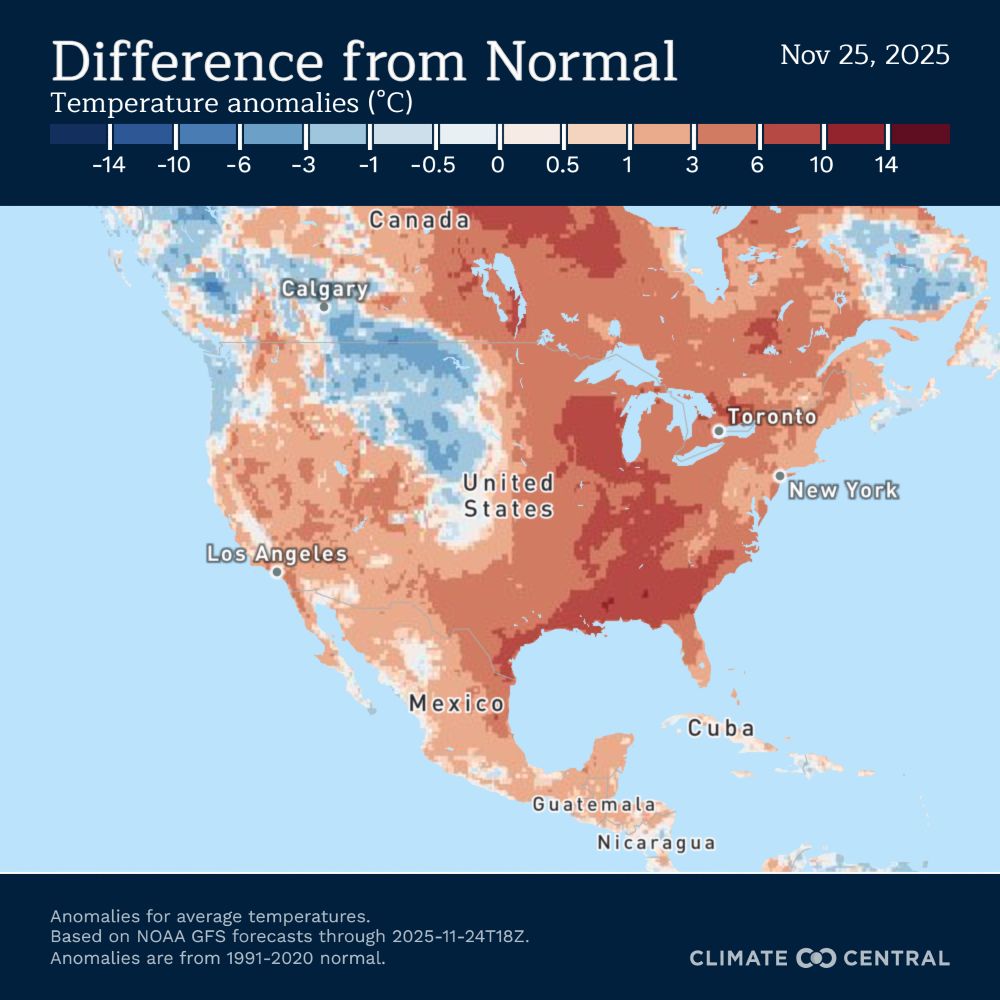
🌡️Find past and forecast global temperature anomalies using our Climate Shift Index tool. ⬇️
csi.climatecentral.org/climate-shif...
Of 247 U.S. cities analyzed, 92% saw November temperatures rise since 1970 — by 2.4°F on average.
Find out more + the hottest/coldest/rainiest Thanksgiving on record in this week's Climate Matters
www.climatecentral.org/climate-matt...

Of 247 U.S. cities analyzed, 92% saw November temperatures rise since 1970 — by 2.4°F on average.
Find out more + the hottest/coldest/rainiest Thanksgiving on record in this week's Climate Matters
www.climatecentral.org/climate-matt...
For more:
buff.ly/KHJvS7T
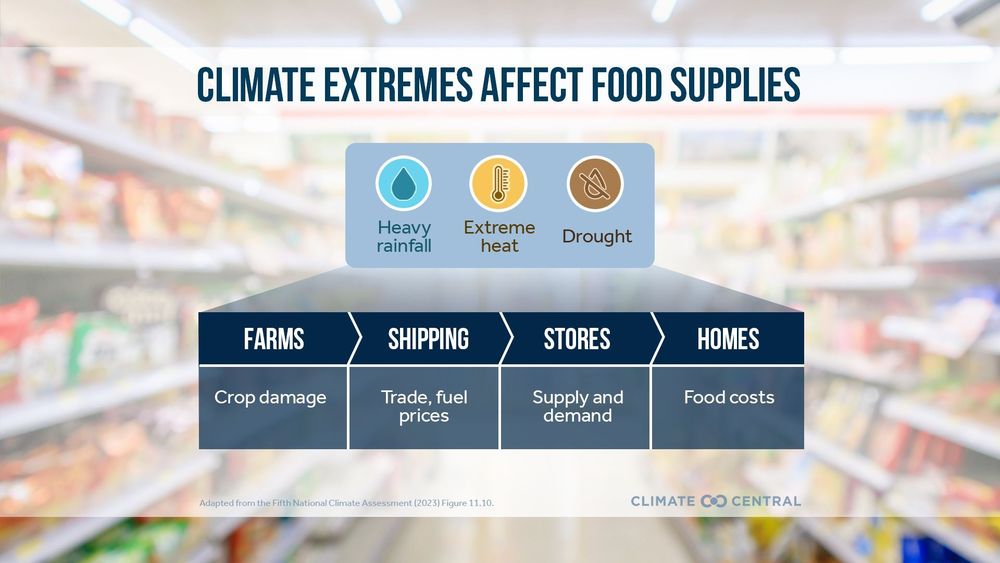
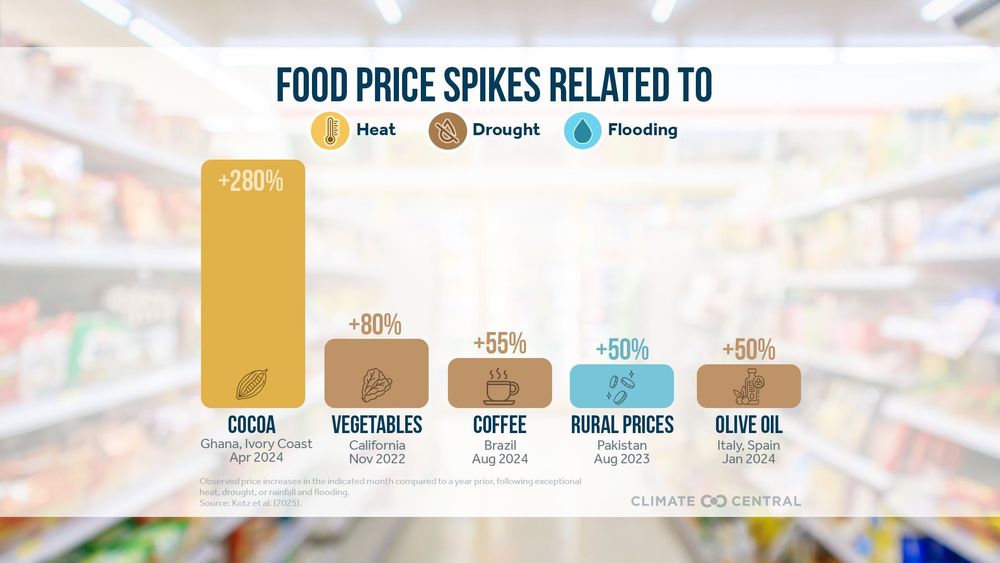
For more:
buff.ly/KHJvS7T
coastal.climatecentral.org/toxic-tides

coastal.climatecentral.org/toxic-tides
www.climatecentral.org/report/toxic...
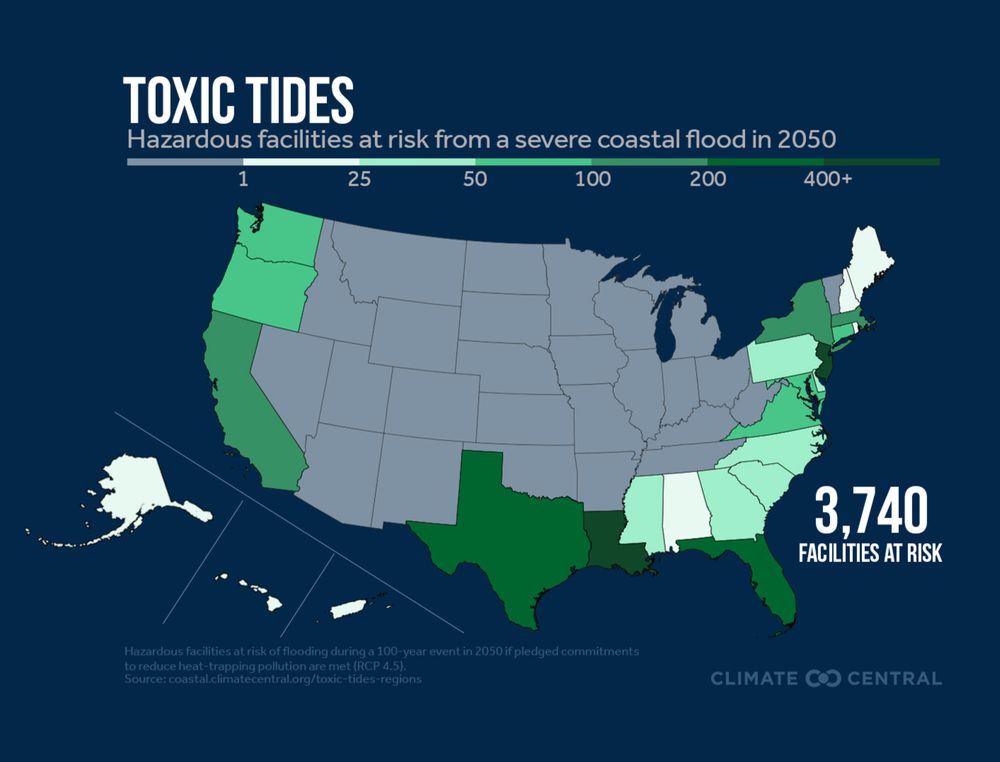
www.climatecentral.org/report/toxic...
Every county in the Lower 48 has seen warming from September to November, mostly due to climate change.
Since 1970, fall has warmed by 2.8°F on average across 237 U.S. cities.
Cooler days still happen, but warmer-than-average days are happening more often.
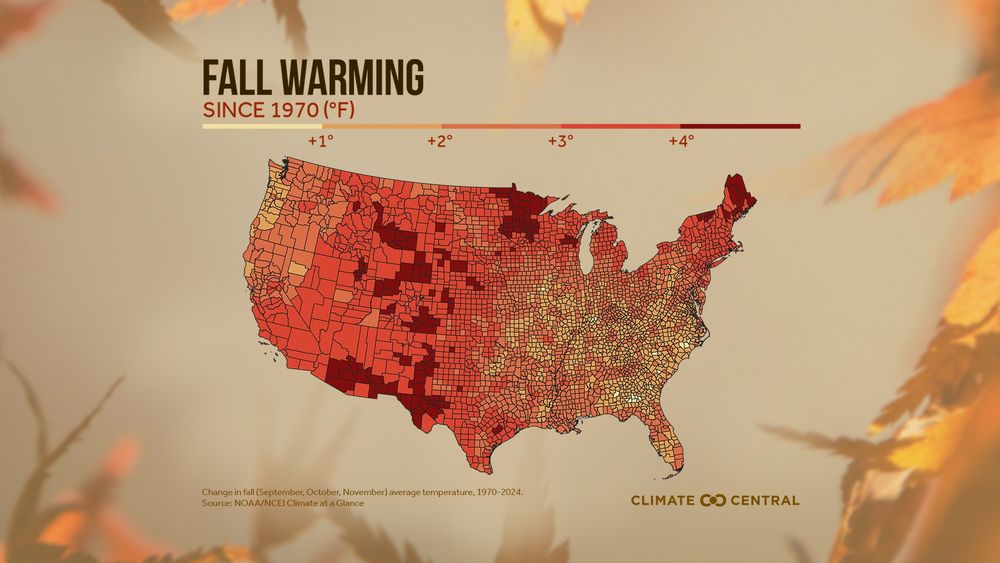
Every county in the Lower 48 has seen warming from September to November, mostly due to climate change.
Since 1970, fall has warmed by 2.8°F on average across 237 U.S. cities.
Cooler days still happen, but warmer-than-average days are happening more often.
For areas in South Texas and northern Florida, warmth like this would be rare or almost impossible without heat-trapping pollution.
For areas in South Texas and northern Florida, warmth like this would be rare or almost impossible without heat-trapping pollution.
But before the pattern shifts, unusual November warmth has been breaking or nearing daily records across the US this week.
🧵Here’s how we know climate change has a clear influence on this fall heat
But before the pattern shifts, unusual November warmth has been breaking or nearing daily records across the US this week.
🧵Here’s how we know climate change has a clear influence on this fall heat

About 80% of major U.S. power outages are now tied to weather:
• Severe storms: 58%
• Winter storms: 23%
• Tropical cyclones: 14%
• Extreme Heat (3%)
• Wildfires (2%)
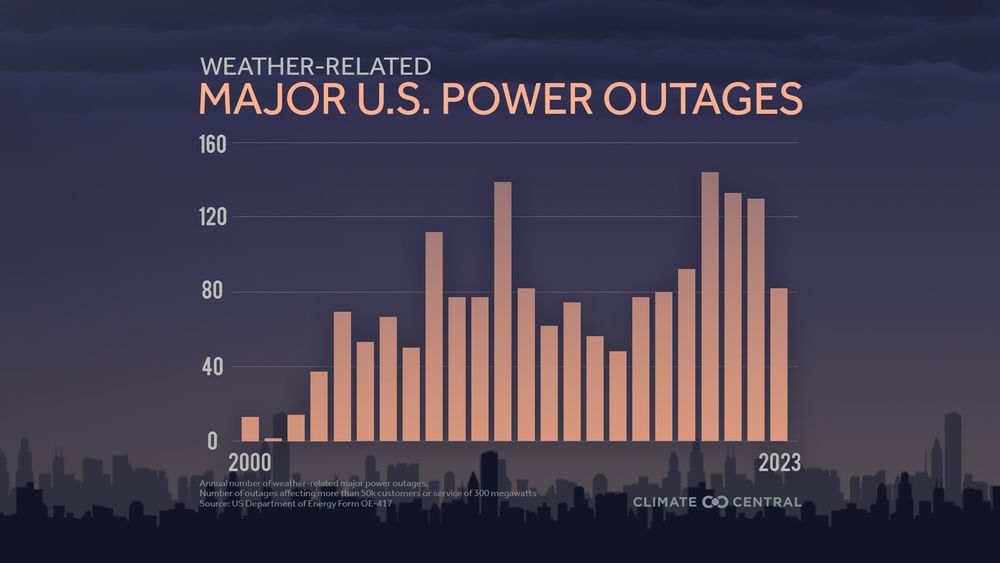
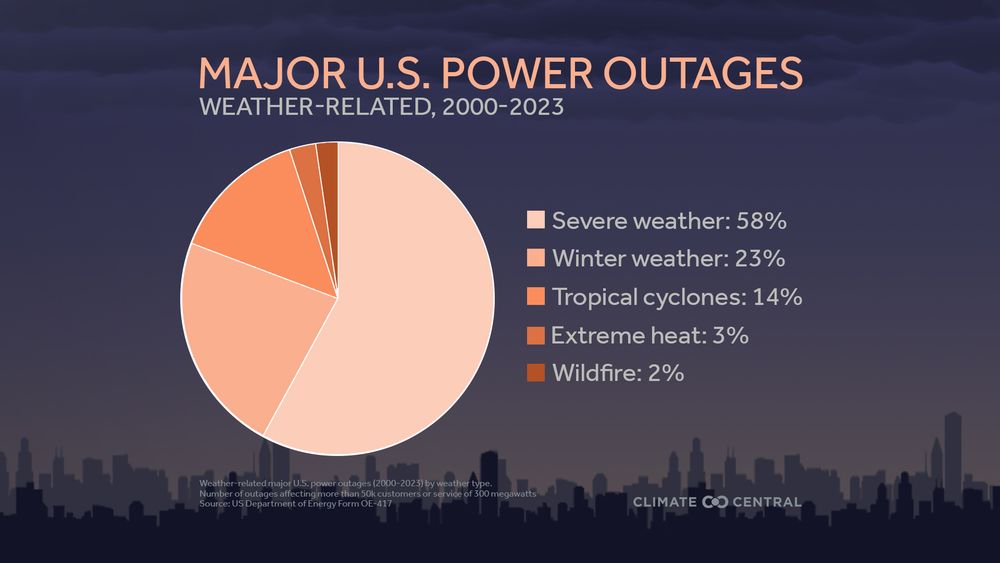

About 80% of major U.S. power outages are now tied to weather:
• Severe storms: 58%
• Winter storms: 23%
• Tropical cyclones: 14%
• Extreme Heat (3%)
• Wildfires (2%)

• Climate Change's Impact on Winter: www.climatecentral.org/climate-matt...
• Explore the Interactive Map: observablehq.com/@climatecent...
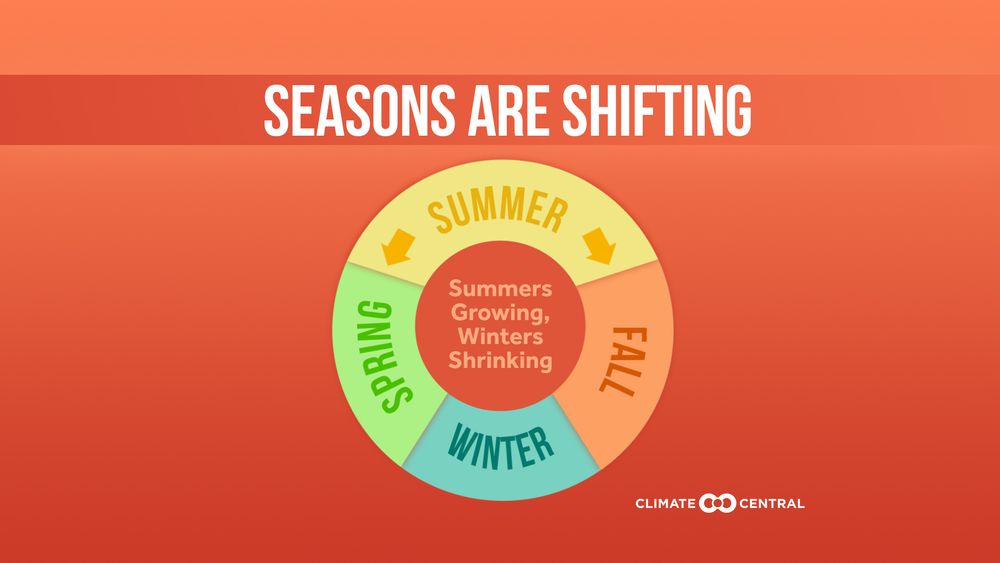
• Climate Change's Impact on Winter: www.climatecentral.org/climate-matt...
• Explore the Interactive Map: observablehq.com/@climatecent...
The coldest days aren’t as cold, and those deep cold snaps? They don’t last like they used to.
Across 240 U.S. cities, the longest winter cold streaks have shortened by about 6 days since the 1970s.

The coldest days aren’t as cold, and those deep cold snaps? They don’t last like they used to.
Across 240 U.S. cities, the longest winter cold streaks have shortened by about 6 days since the 1970s.
On average, winters have warmed the most in cities across the:
❄️Upper Midwest: +5.4°F
❄️Alaska: +4.8°F
❄️Northeast: +4.8°F
❄️Ohio Valley: +4.4°F
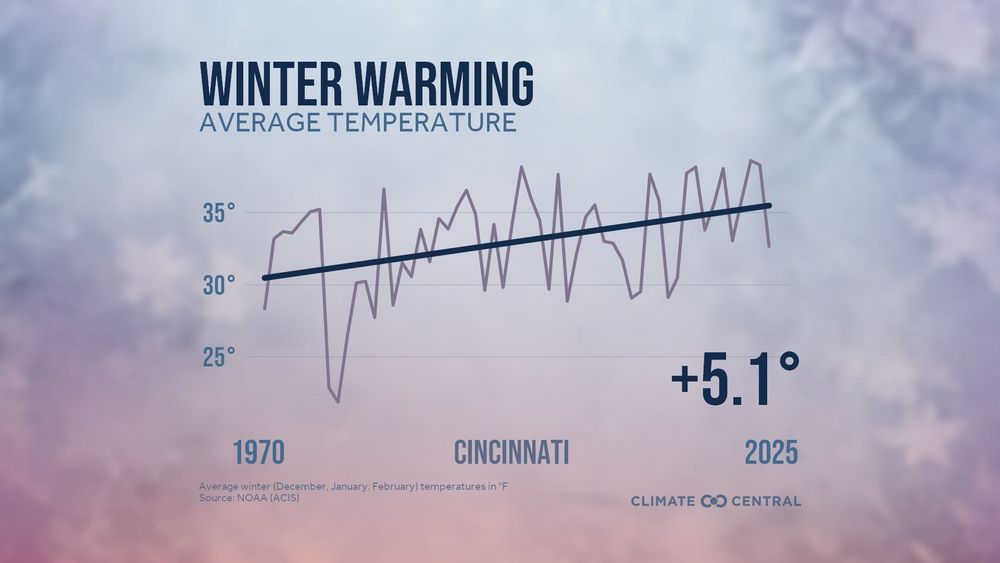
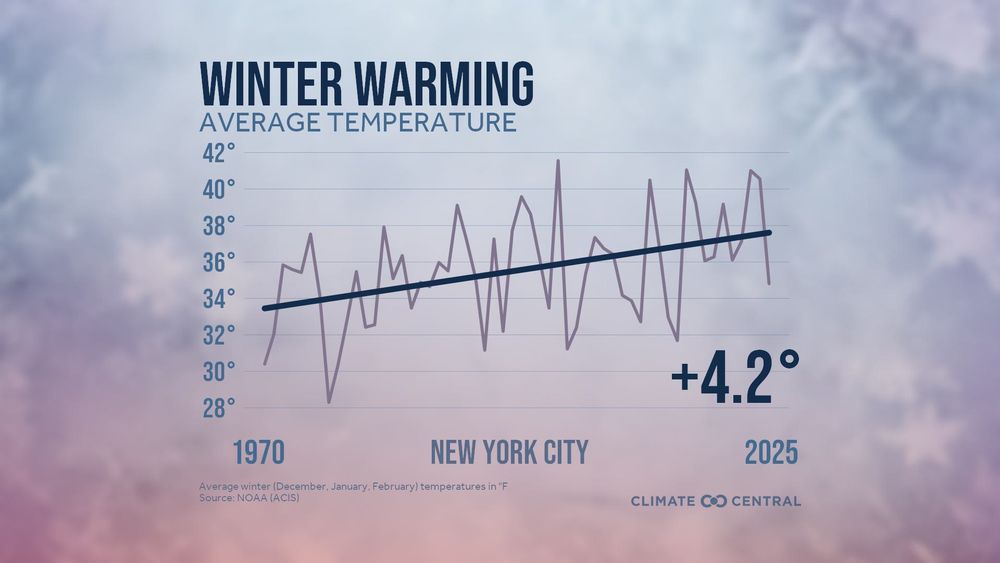
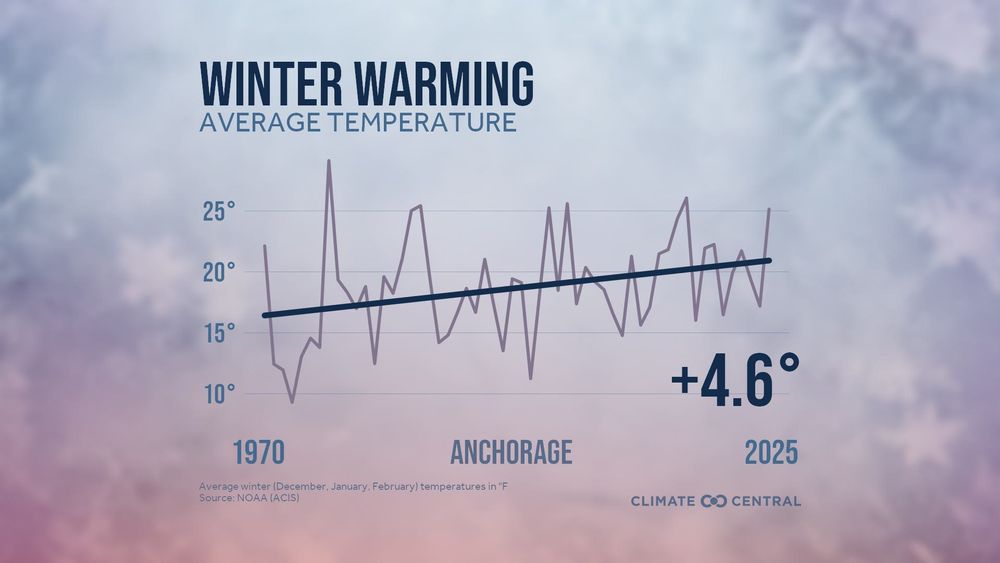
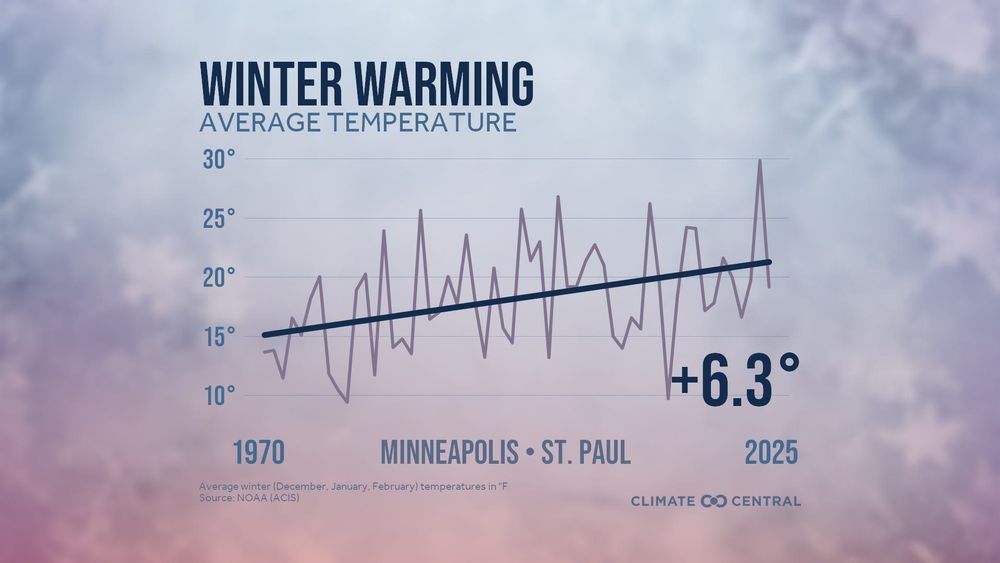
On average, winters have warmed the most in cities across the:
❄️Upper Midwest: +5.4°F
❄️Alaska: +4.8°F
❄️Northeast: +4.8°F
❄️Ohio Valley: +4.4°F
It's actually the fastest-warming season for much of the U.S.
Since just 1970, winters (December - February) have warmed in 98% of 244 U.S. cities analyzed by 3.9°F on average.
Do you wanna build a snowman with few of the details? 🧵

It's actually the fastest-warming season for much of the U.S.
Since just 1970, winters (December - February) have warmed in 98% of 244 U.S. cities analyzed by 3.9°F on average.
Do you wanna build a snowman with few of the details? 🧵
But the data is clear: these chilly days are shrinking, while warmer-than-average days are taking over
Since 1970, the U.S. fall has warmed by an average of 2.8°F.
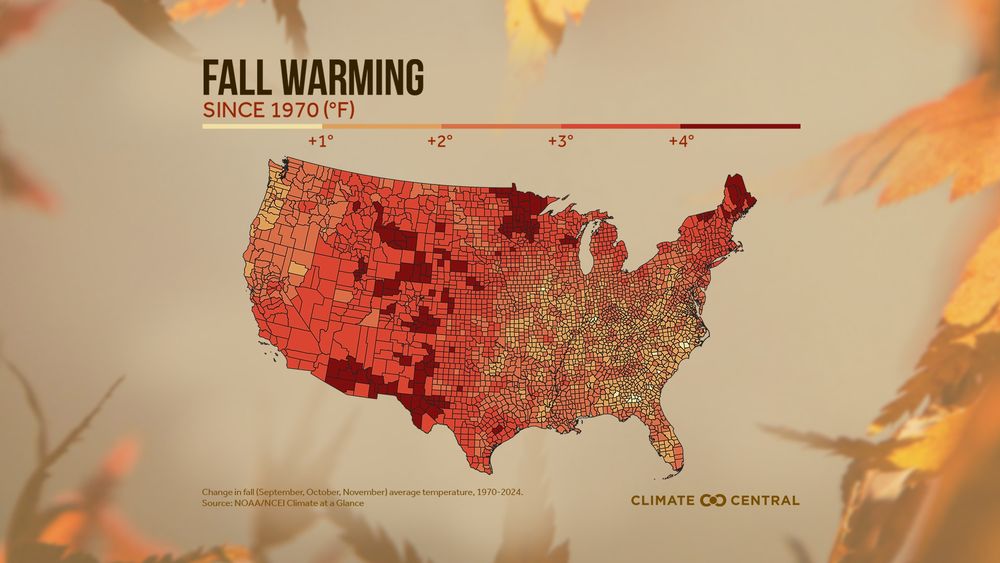
But the data is clear: these chilly days are shrinking, while warmer-than-average days are taking over
Since 1970, the U.S. fall has warmed by an average of 2.8°F.
1990s — 170 records (85% highs, 15% lows)
2000s — 60 records (87% highs, 13% lows)
2010s — 143 records (97% highs, 3% lows)
2020s — 128 records so far (100% highs)
Today was the FIRST record low temperature recorded here since 2020

1990s — 170 records (85% highs, 15% lows)
2000s — 60 records (87% highs, 13% lows)
2010s — 143 records (97% highs, 3% lows)
2020s — 128 records so far (100% highs)
Today was the FIRST record low temperature recorded here since 2020
But thanks to heat-trapping pollution, record temperatures aren’t balanced anymore.
Short of the long: Record HEAT is FAR OUTPACING record cold
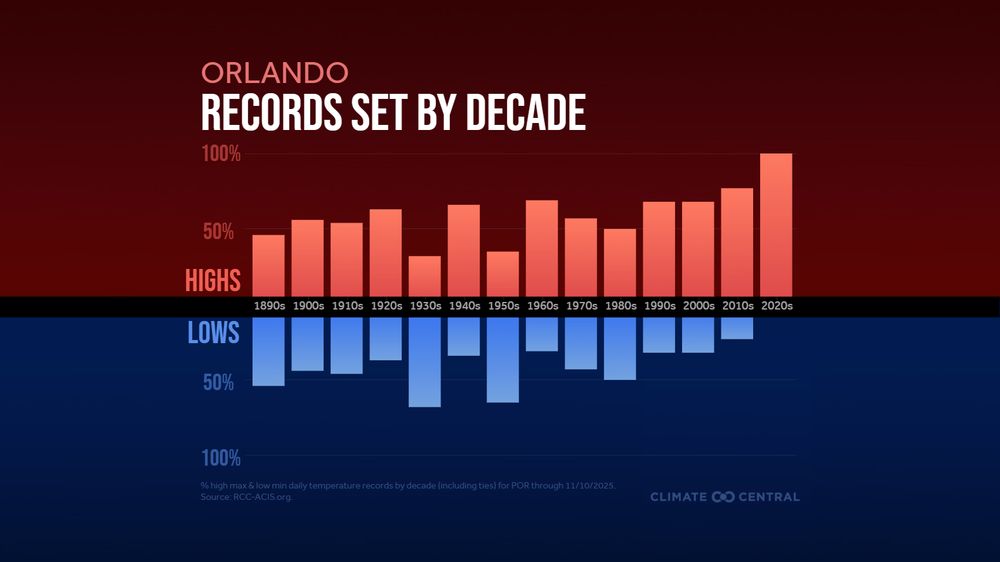
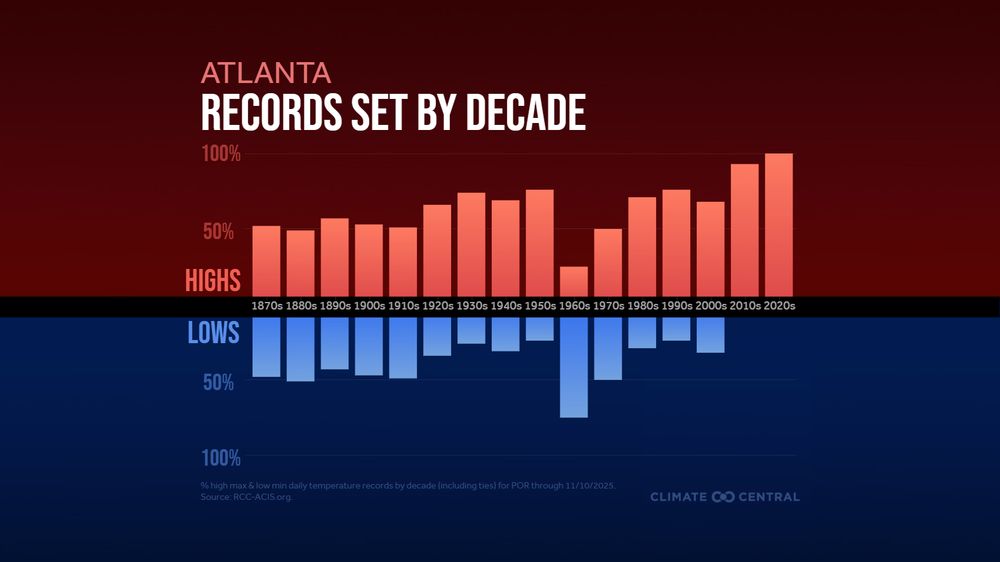
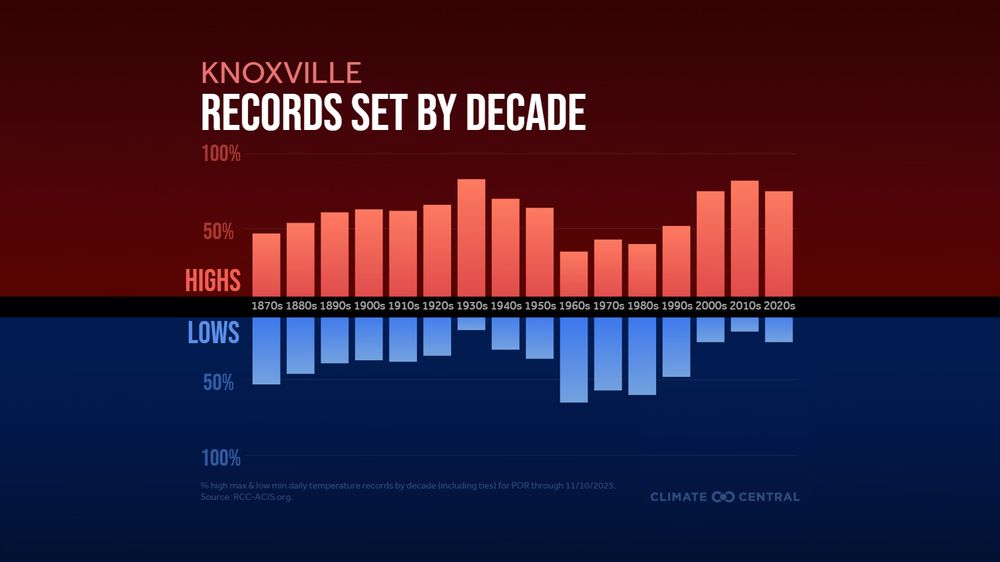
But thanks to heat-trapping pollution, record temperatures aren’t balanced anymore.
Short of the long: Record HEAT is FAR OUTPACING record cold
Big coats were a must with temperatures 15°-25° colder than average...among the coldest, if not record-setting, for Nov. 11 mornings of record.
This kind of early winter cold? Not impossible,it’s becoming less likely as we continue to warm the planet
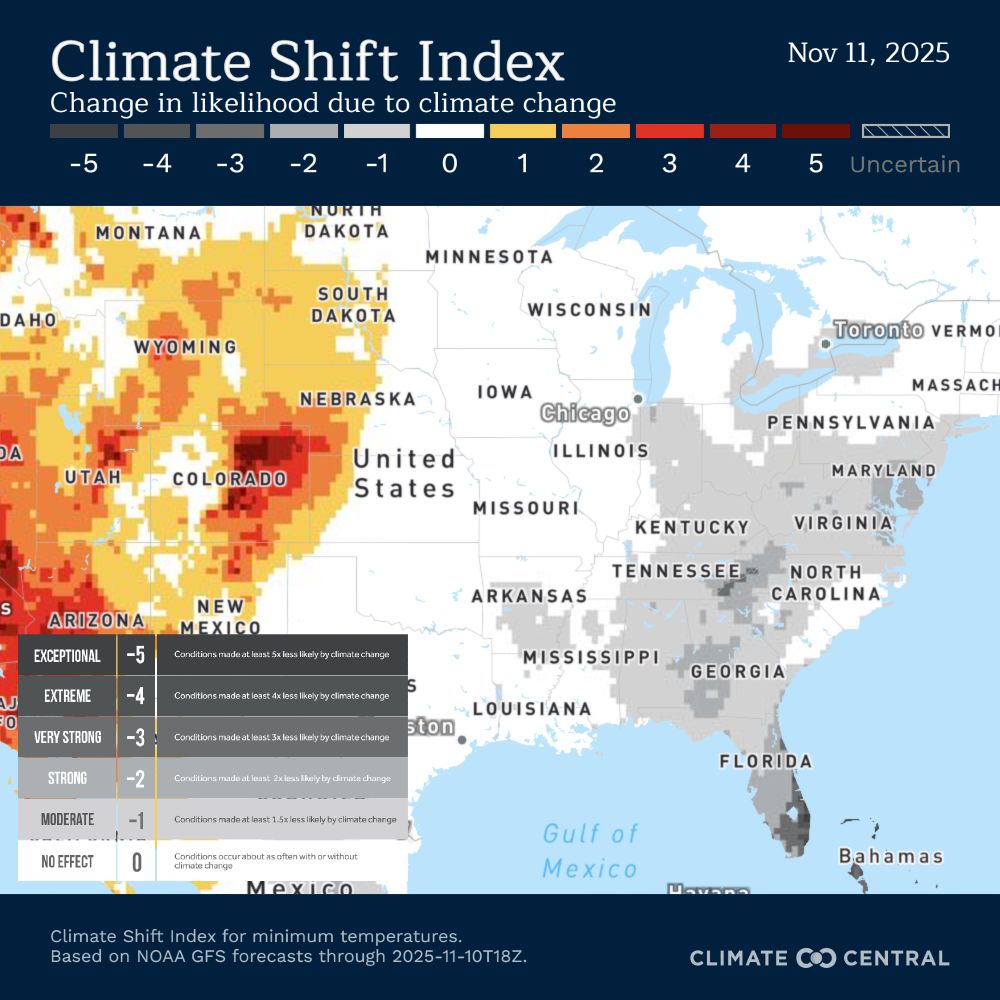

Big coats were a must with temperatures 15°-25° colder than average...among the coldest, if not record-setting, for Nov. 11 mornings of record.
This kind of early winter cold? Not impossible,it’s becoming less likely as we continue to warm the planet
While comfortable, many woke up to morning temps 5°–15° warmer than average...among the top 5 warmest Nov. 11 mornings on record.
This unusual warmth? Made 3–5x MORE likely by man-made climate change in cities like LA, Denver, Phoenix, and Las Vegas.
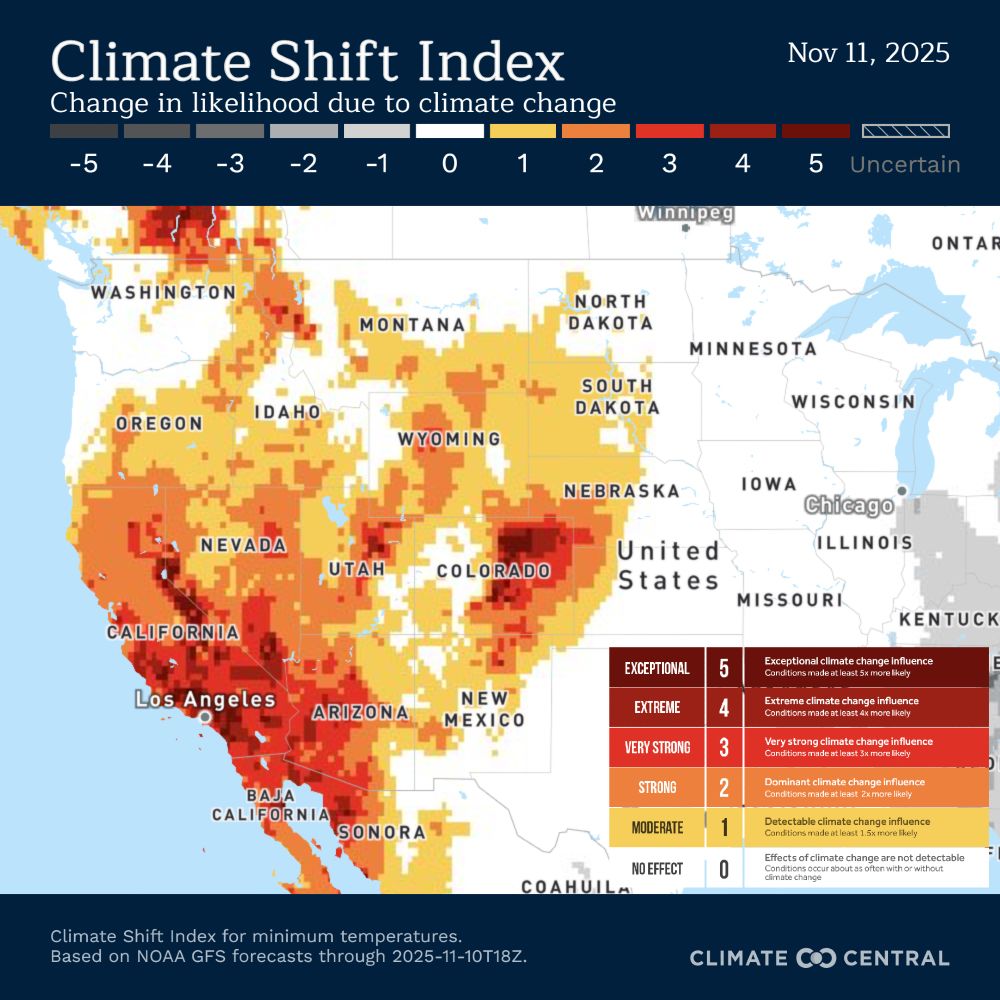

While comfortable, many woke up to morning temps 5°–15° warmer than average...among the top 5 warmest Nov. 11 mornings on record.
This unusual warmth? Made 3–5x MORE likely by man-made climate change in cities like LA, Denver, Phoenix, and Las Vegas.
...but that is not the whole story. It’s split across the Lower 48 — with climate change playing a role in both the cold and the warmth.
Let's pull this thread 🧵
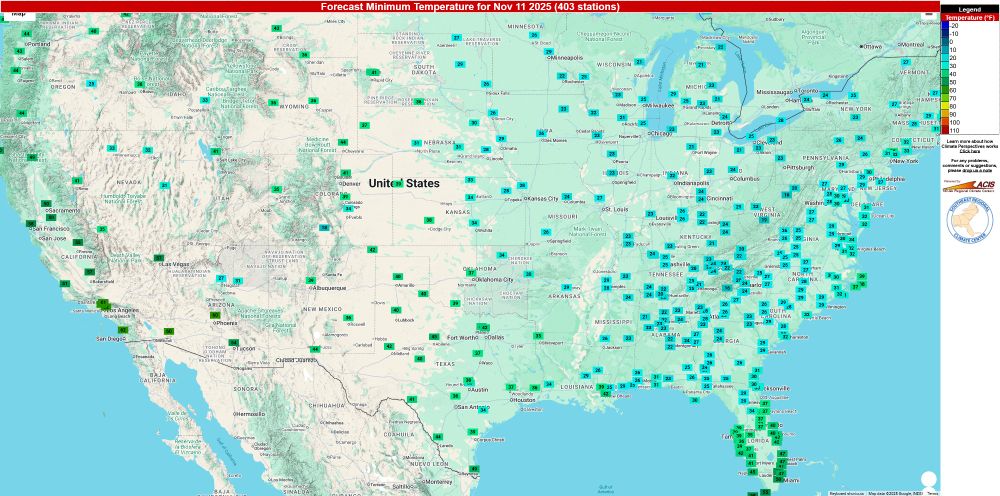
...but that is not the whole story. It’s split across the Lower 48 — with climate change playing a role in both the cold and the warmth.
Let's pull this thread 🧵
app.climatecentral.org/dataviz/loca...
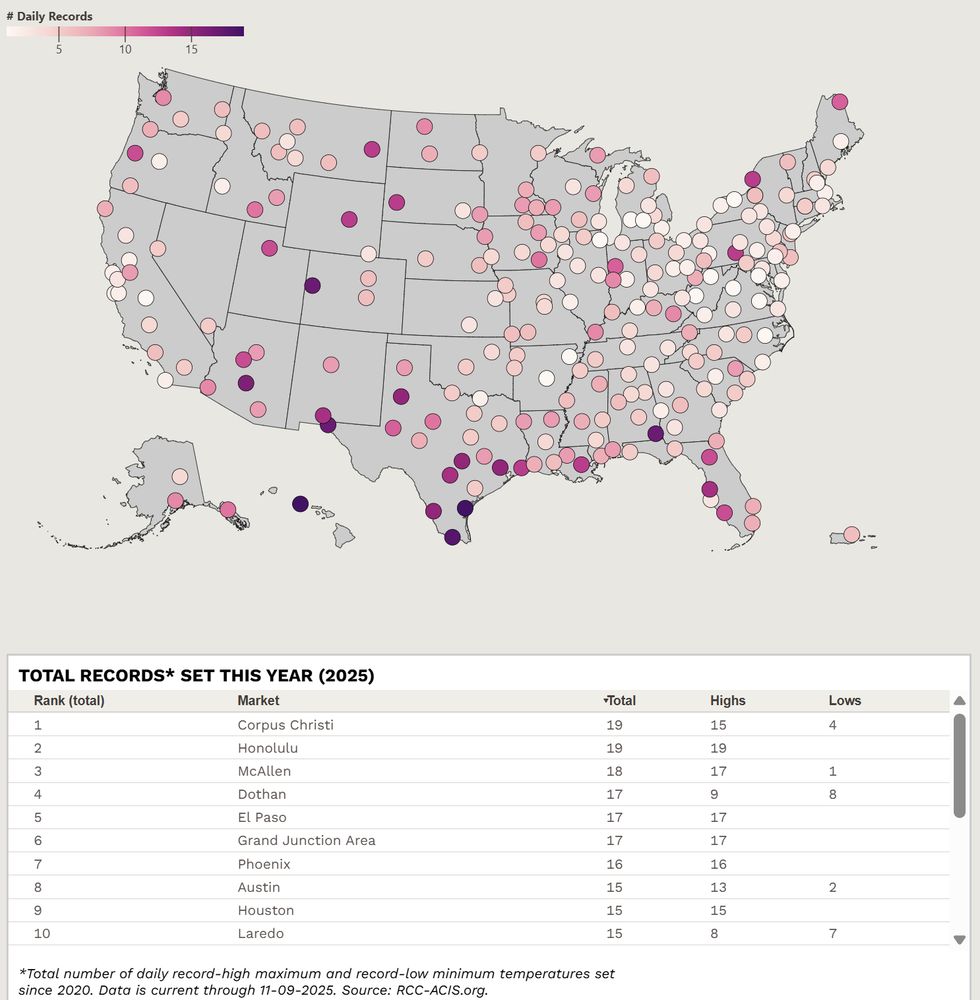
app.climatecentral.org/dataviz/loca...
🔴 Climate Shift Index shows this unusual November warmth was 3–5x more likely due to human-caused climate change.
Explore the data ▶️ csi.climatecentral.org

🔴 Climate Shift Index shows this unusual November warmth was 3–5x more likely due to human-caused climate change.
Explore the data ▶️ csi.climatecentral.org

